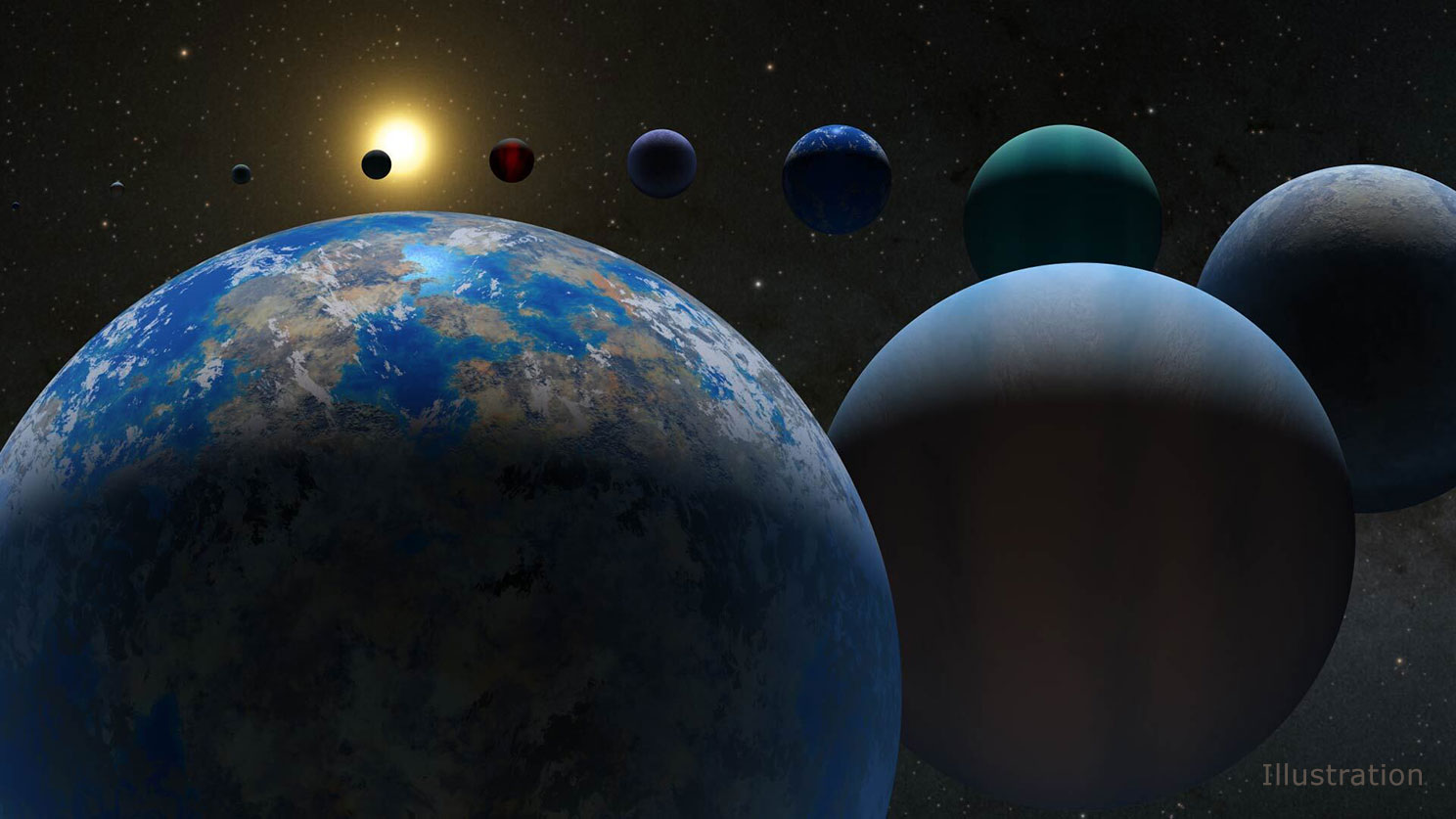5,000 exoplanets! NASA confirms big milestone for planetary science

Our tally of strange new worlds just reached 5,000.
Astronomers have added the 5,000th alien world to the NASA Exoplanet Archive, officials with the agency's Jet Propulsion Laboratory (JPL) in Southern California announced on Monday (March 21).
The milestone comes amid a surge of recent discoveries and the promise of more insights to come, as NASA's $10 billion James Webb Space Telescope readies for planet-gazing operations in deep space.
"The 5,000-plus planets found so far include small, rocky worlds like Earth, gas giants many times larger than Jupiter, and 'hot Jupiters' in scorchingly close orbits around their stars," JPL officials said in Monday's statement.
"There are 'super-Earths,' which are possible rocky worlds bigger than our own, and 'mini-Neptunes,' smaller versions of our system's Neptune," JPL officials added. "Add to the mix planets orbiting two stars at once and planets stubbornly orbiting the collapsed remnants of dead stars."
Related: The 10 biggest exoplanet discoveries of 2021
The NASA Exoplanet Archive is housed at the California Institute for Technology (Caltech). To be added to the catalog, planets must be independently confirmed by two different methods, and the work must be published in a peer-reviewed journal.
Breaking space news, the latest updates on rocket launches, skywatching events and more!
The first exoplanets were found in the early 1990s. While telescopes on the ground and in space have done well to get the count to 5,000 since then, Jessie Christiansen, science lead of the NASA Exoplanet Archive, stated on Caltech's website that the worlds found to date are "mostly in this little bubble around our solar system, where they are easier to find."
"Of the 5,000 exoplanets known, 4,900 are located within a few thousand light-years of us," Christiansen added. "And think about the fact that we're 30,000 light-years from the center of the galaxy; if you extrapolate from the little bubble around us, that means there are many more planets in our galaxy we haven't found yet, as many as 100 to 200 billion. It's mind-blowing."
The first confirmed planetary discovery came in 1992, when astronomers Alex Wolszczan and Dale Frail published a paper in the journal Nature. They spotted two worlds orbiting a pulsar (a rapidly rotating, dense star corpse) by measuring subtle changes in the timing of the pulses as the light reached Earth.
Ground-based telescopes did the heavy lifting in those early years, and it took several more searches to finally uncover the first planet around a sun-like star in 1995. That world was not hospitable to life as we know it; it was a scorching-hot gas giant that whipped around its parent star in only four Earth days.
Astronomers found these worlds by spotting wobbles (back and forth gravitationally induced motions) of stars as planets tugged upon them. Larger worlds were easier to spot, as they induced bigger wobbles. To find more Earth-sized planets, astronomers said at the time, they would need to try something called the "transit" method. That would assess the light of a star and look for tiny fluctuations as a planet passed across the face.
Astronomer William Borucki helped realize that vision as the principal investigator of NASA's Kepler space telescope, which launched in 2009 and exceeded its main mission by several years until it finally ran out of fuel in 2018. Kepler has racked up more than 2,700 planet discoveries to date, many of them Earth-sized or smaller worlds, and still has a database generating fresh finds to this day.
Many other instruments have joined the planet hunt since Kepler launched. On the ground, the HARPS spectrograph, which is part of the 11.8-foot (3.6-meter) telescope at the European Southern Observatory's La Silla Observatory in Chile, is an adept planet-hunter of its own.
By 2011 (eight years after first light), HARPS had discovered more than 150 exoplanets. While access has been restricted periodically in latter years due to the coronavirus pandemic, HARPS remains operational and continues to seek new worlds with high precision.
In space, numerous observatories also assist with the planet search, among them NASA's Transiting Exoplanet Survey Satellite (TESS), the NASA-European Space Agency (ESA) Hubble Space Telescope, and ESA's Characterizing Exoplanet Satellite (CHEOPS). Several other huge telescopes under construction on the ground, including the Giant Magellan Telescope and the Extremely Large Telescope in Chile, are scheduled to come online later this decade, adding other powerful eyes to the ongoing search.
Webb will help enhance the tally of exoplanets by studying the atmospheres of several relatively nearby worlds in detail. While such work may focus largely on gas giants, scientists say Webb's observations will be useful for a future generation of observatories with even more high-powered optics ready to see planets closer in size to Earth.
Follow Elizabeth Howell on Twitter @howellspace. Follow us on Twitter @Spacedotcom and on Facebook.

Elizabeth Howell (she/her), Ph.D., was a staff writer in the spaceflight channel between 2022 and 2024 specializing in Canadian space news. She was contributing writer for Space.com for 10 years from 2012 to 2024. Elizabeth's reporting includes multiple exclusives with the White House, leading world coverage about a lost-and-found space tomato on the International Space Station, witnessing five human spaceflight launches on two continents, flying parabolic, working inside a spacesuit, and participating in a simulated Mars mission. Her latest book, "Why Am I Taller?" (ECW Press, 2022) is co-written with astronaut Dave Williams.
